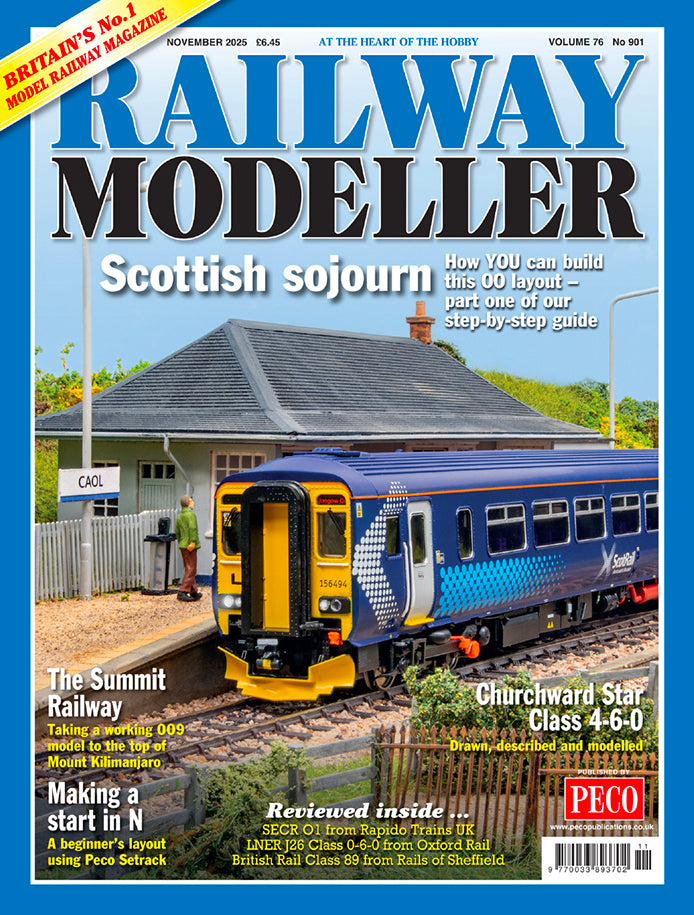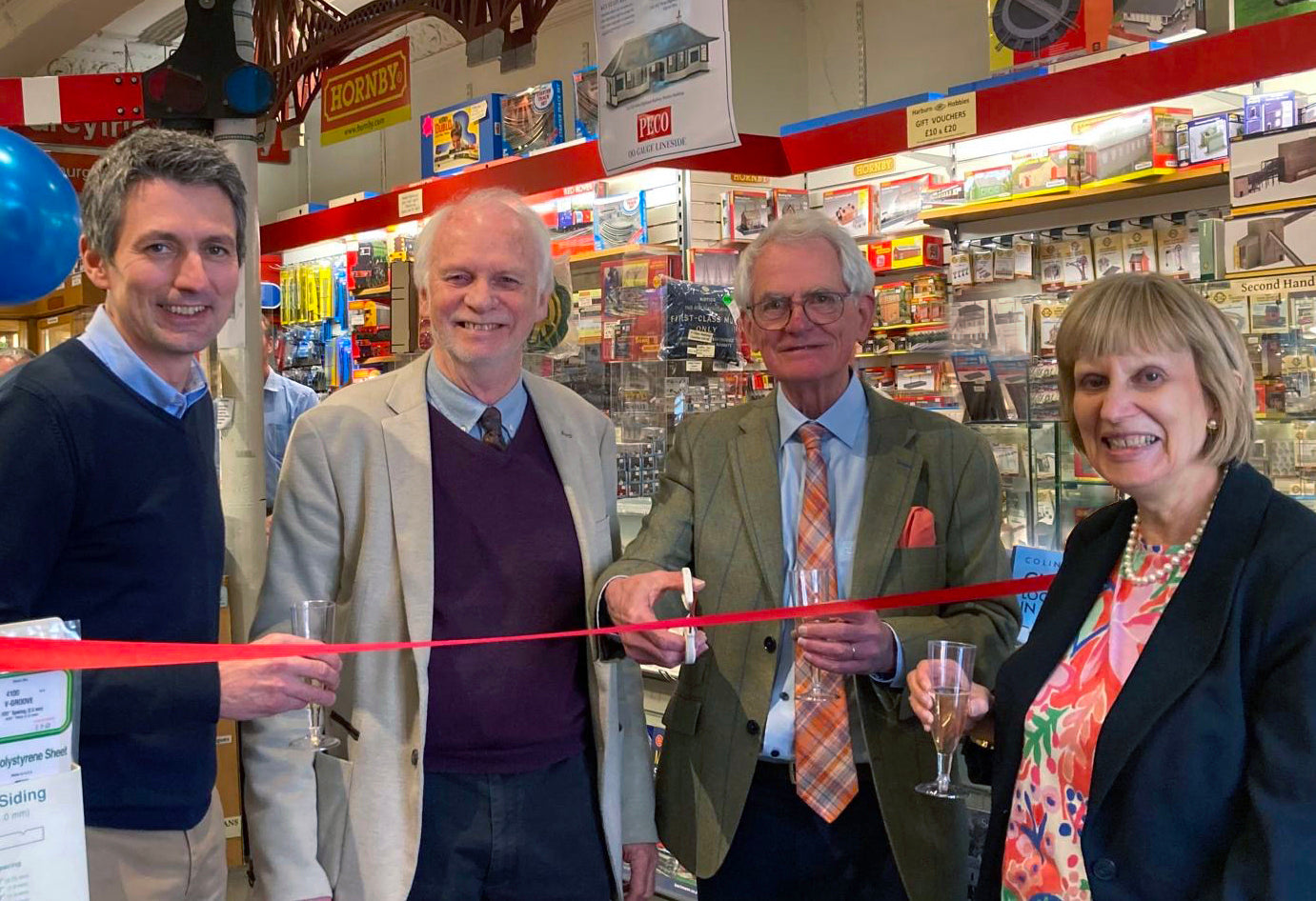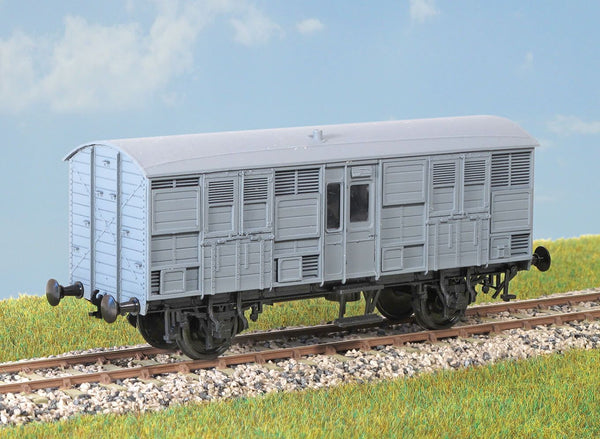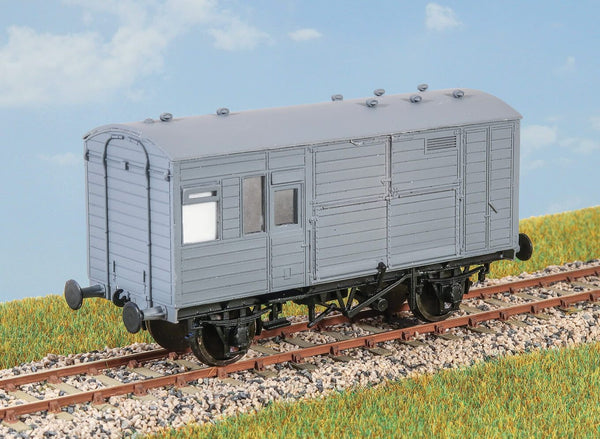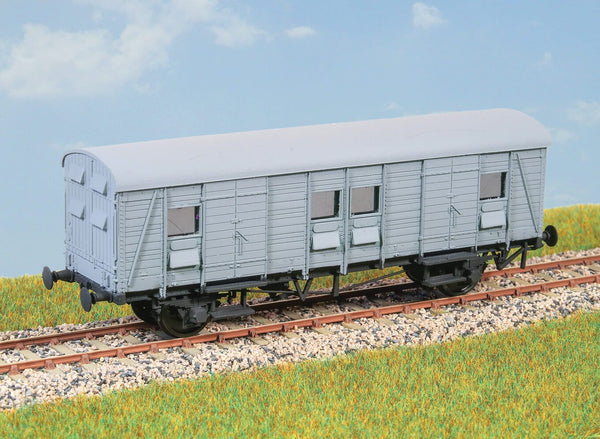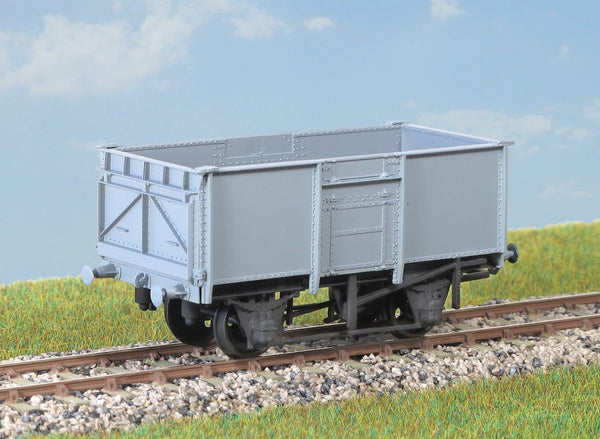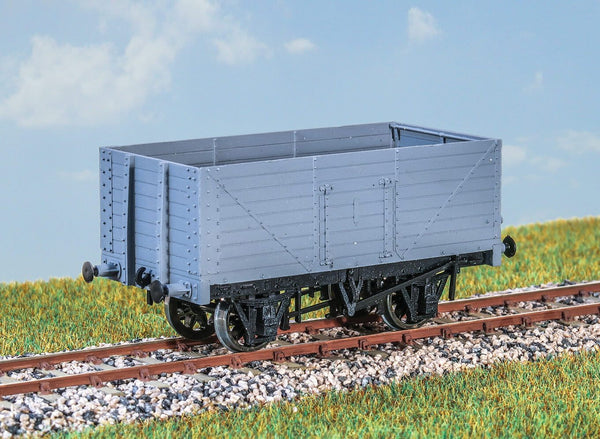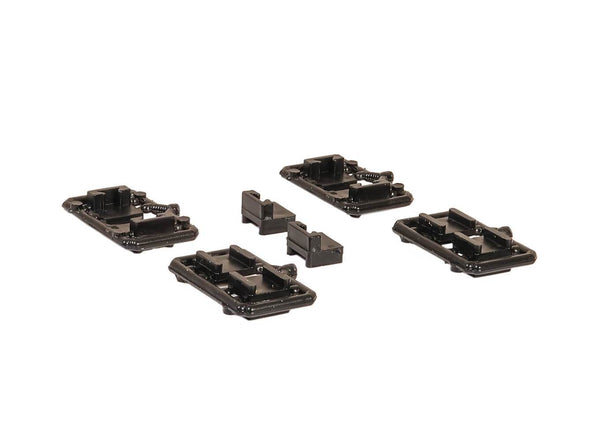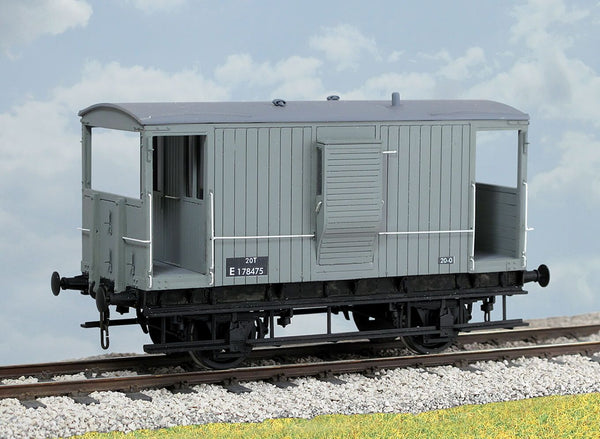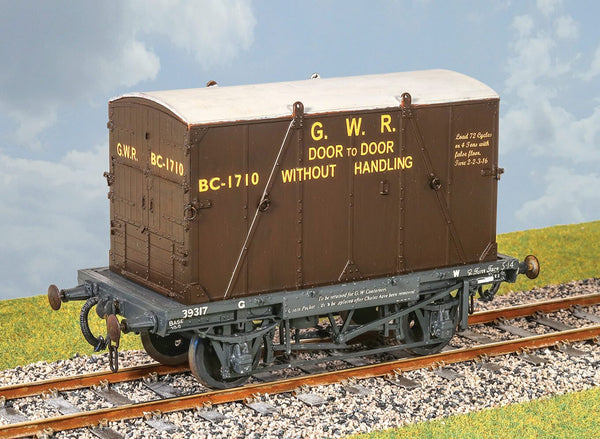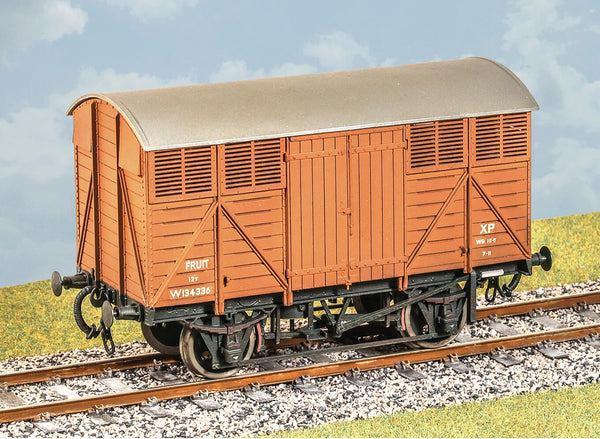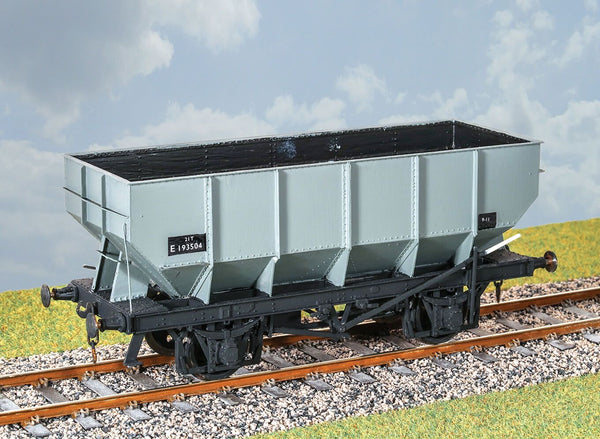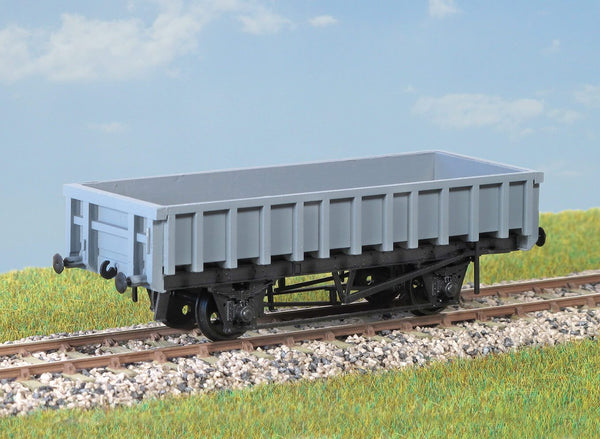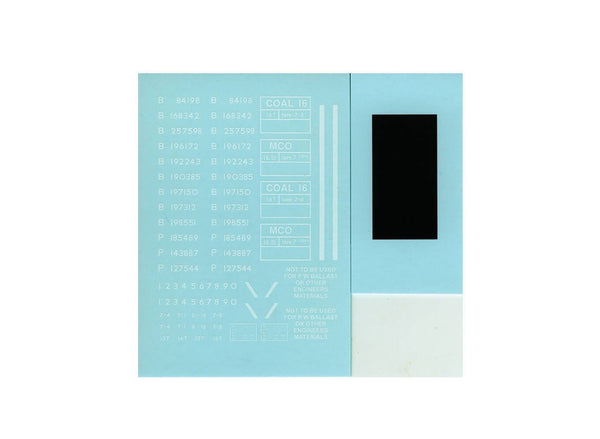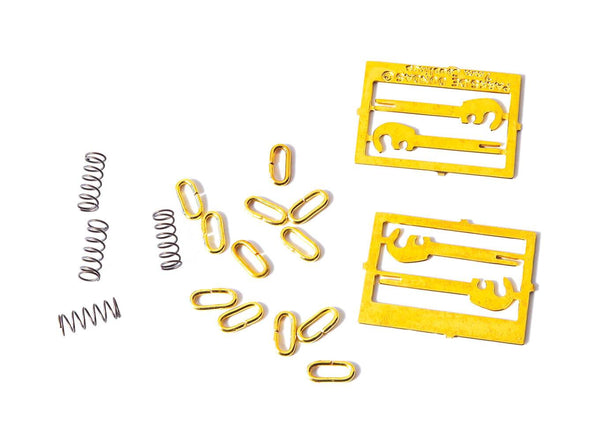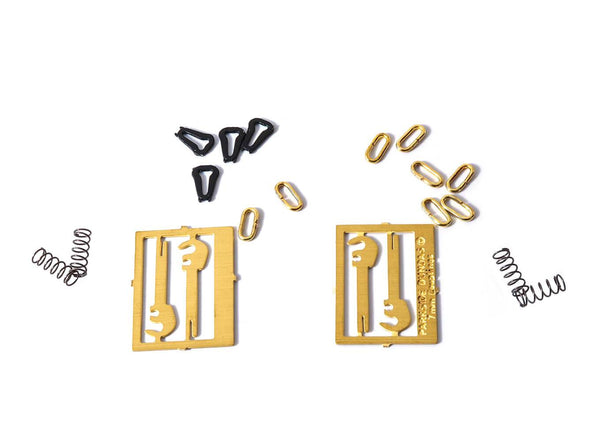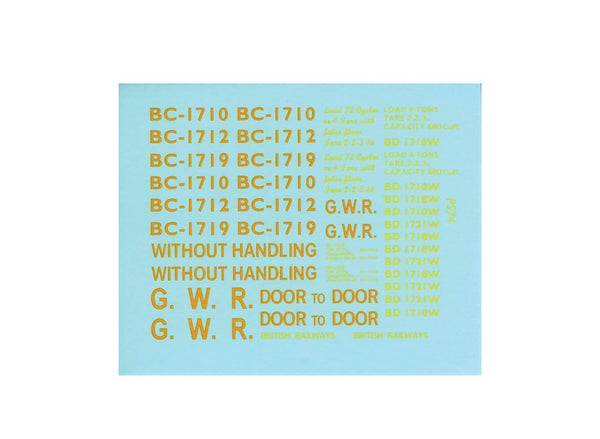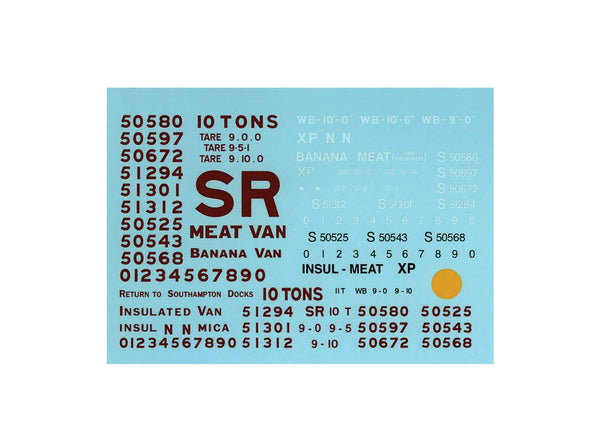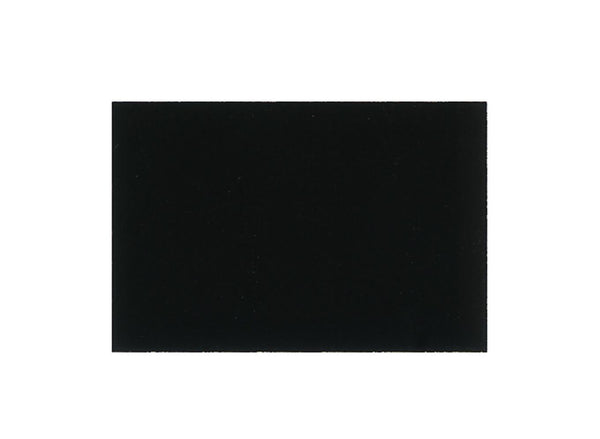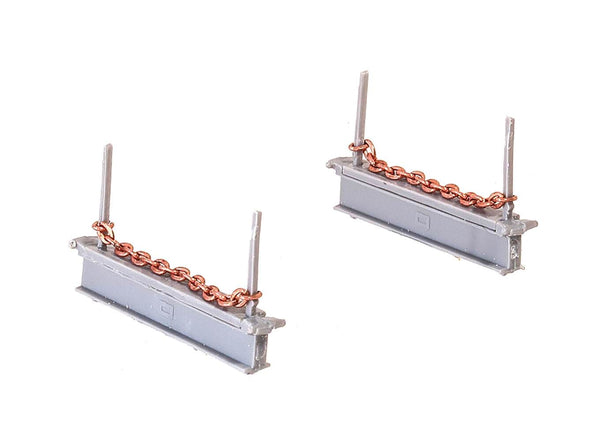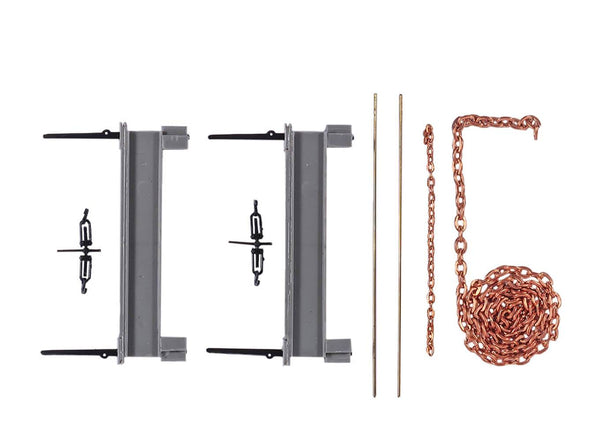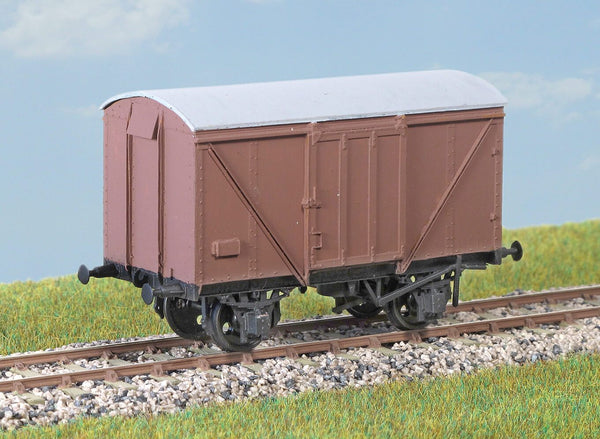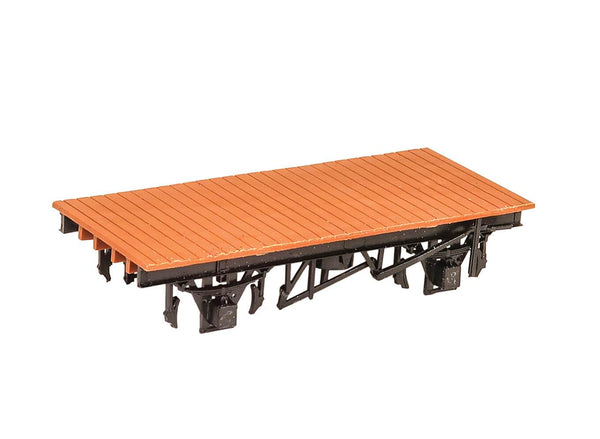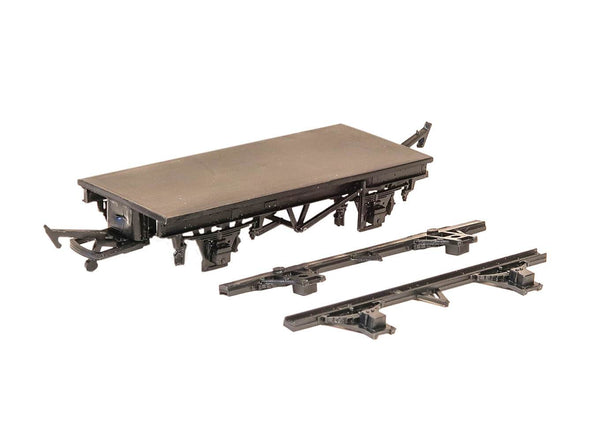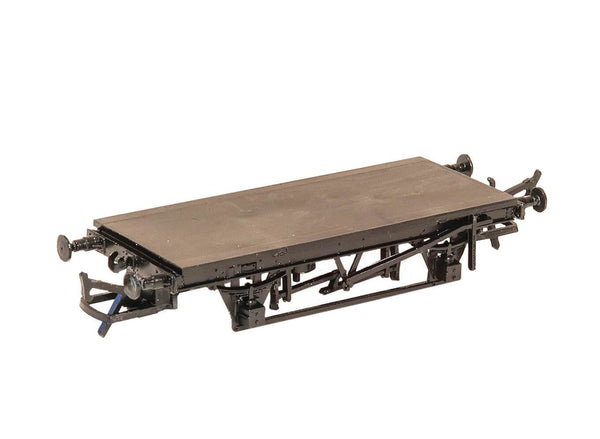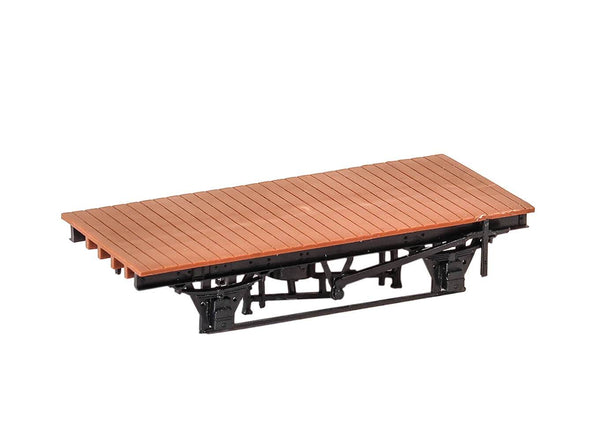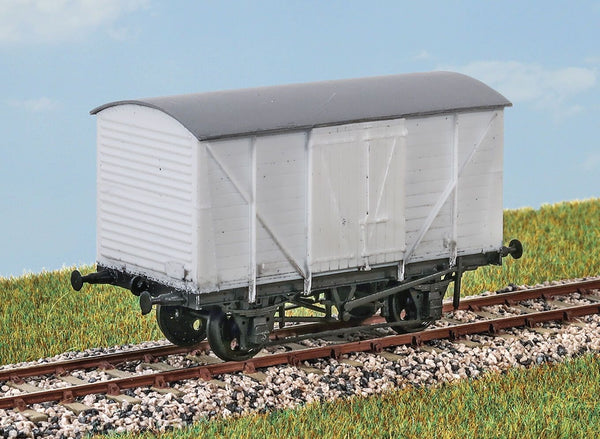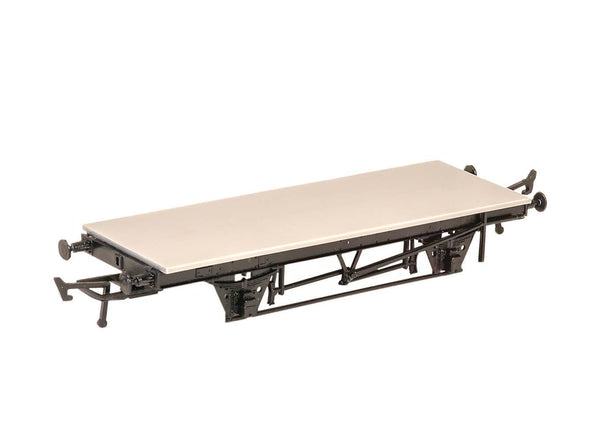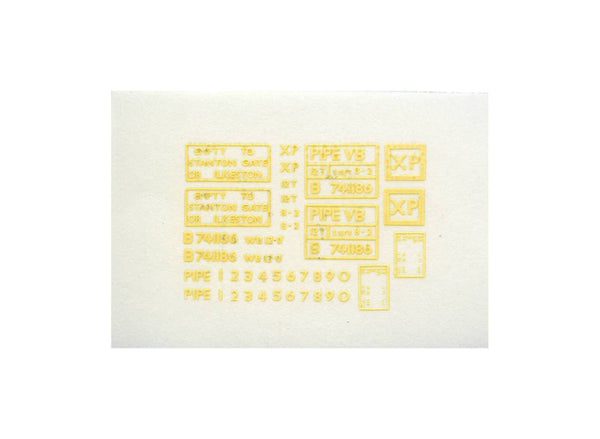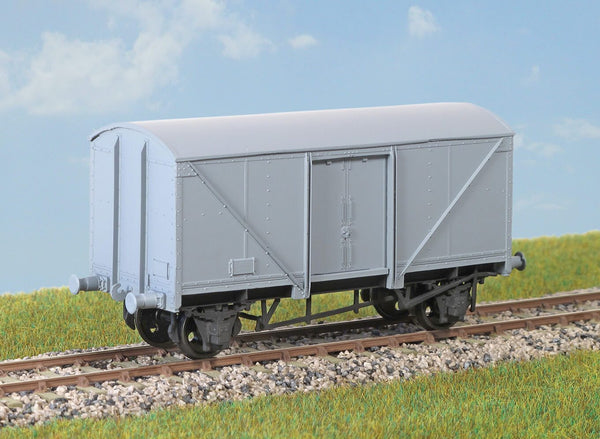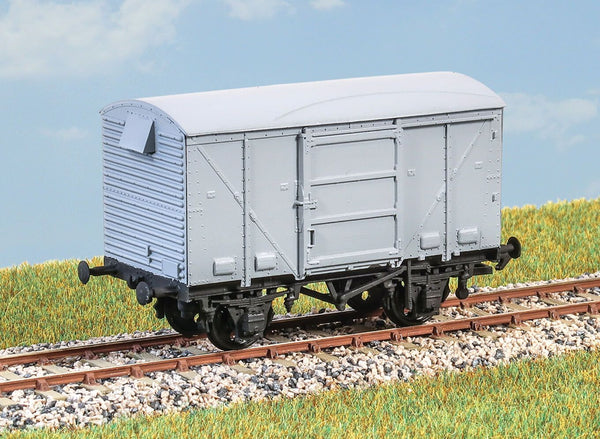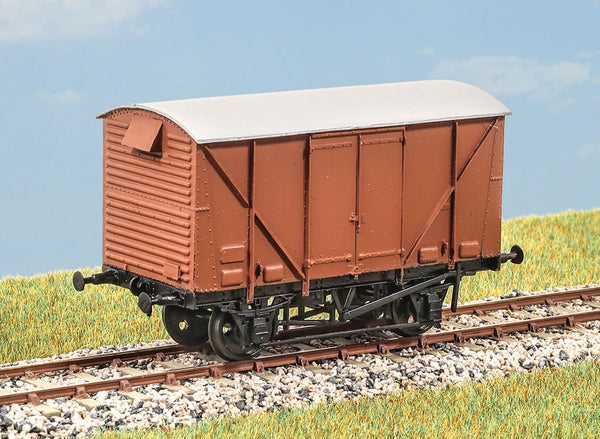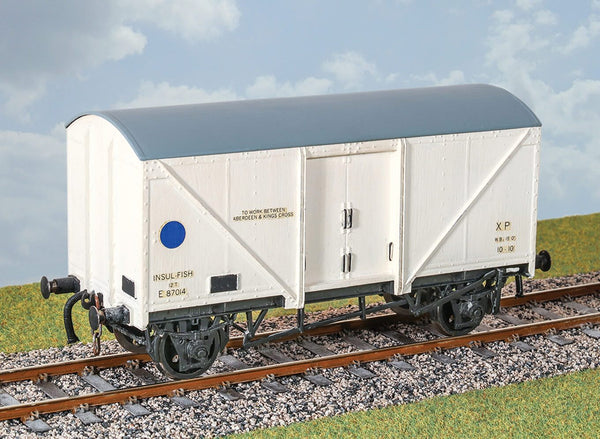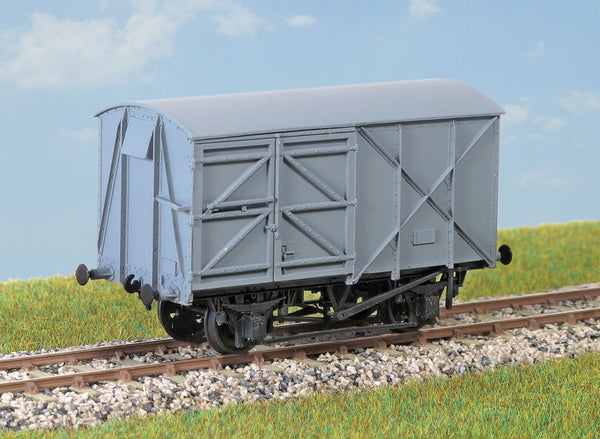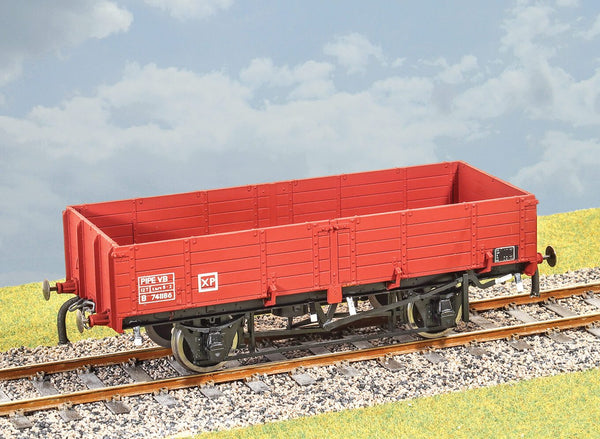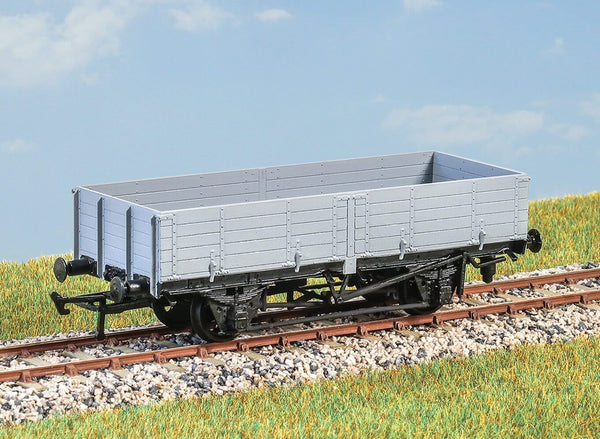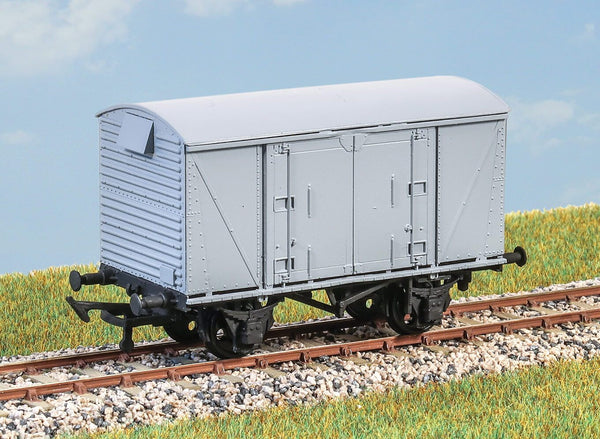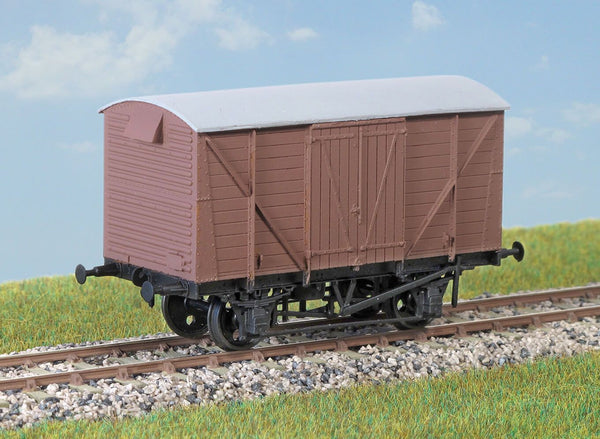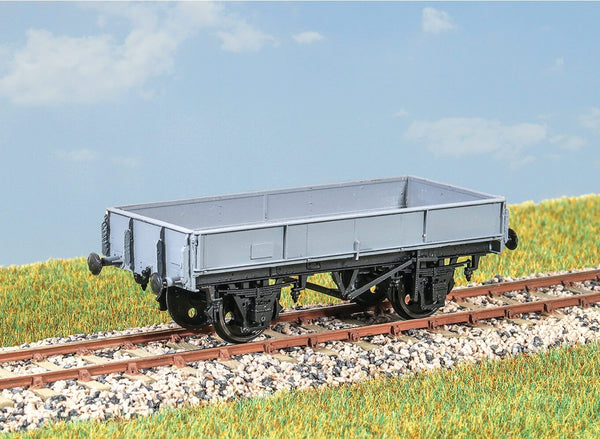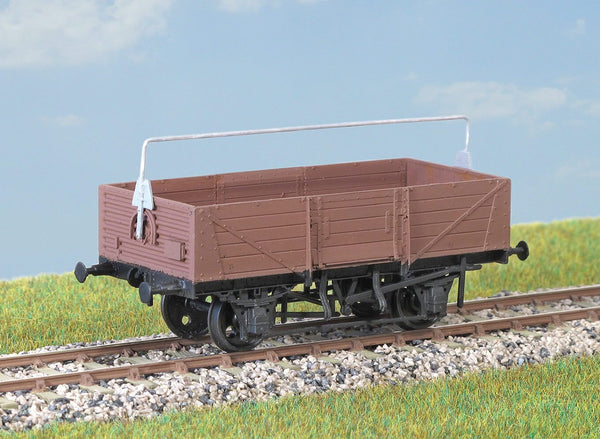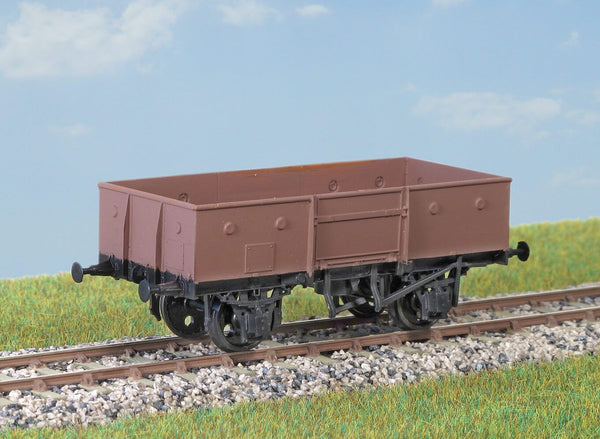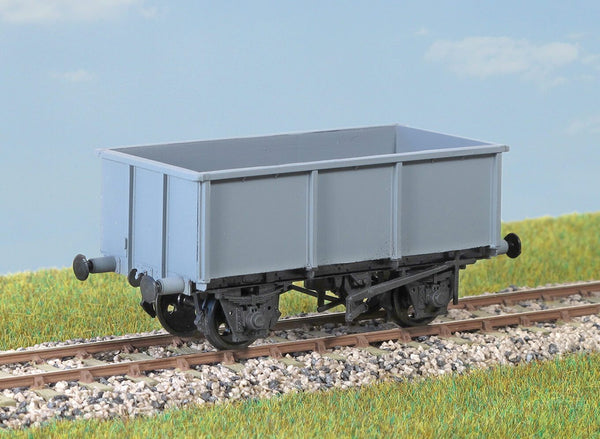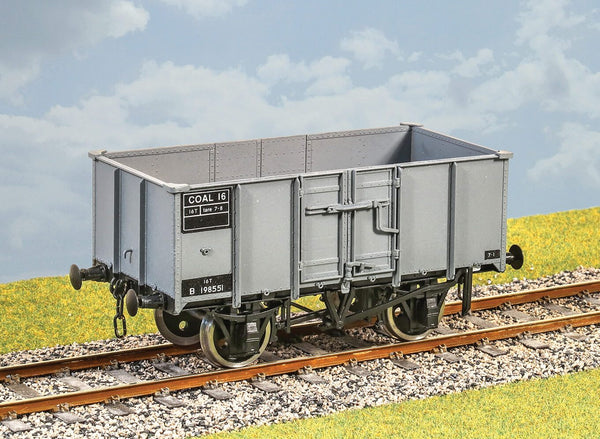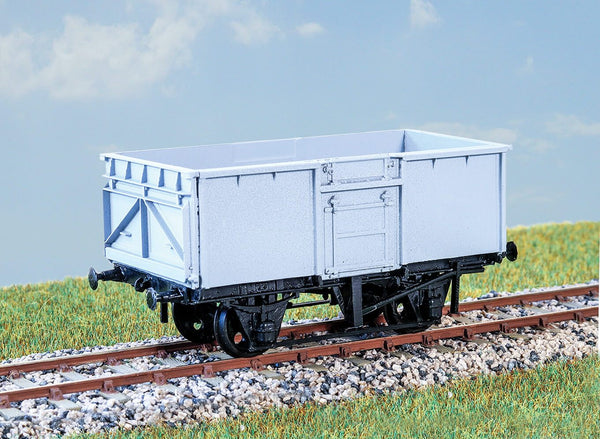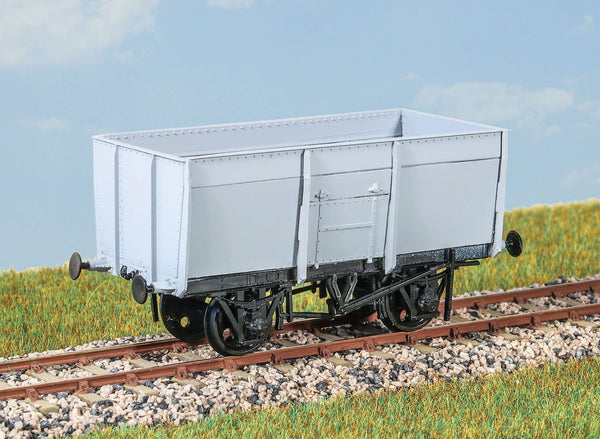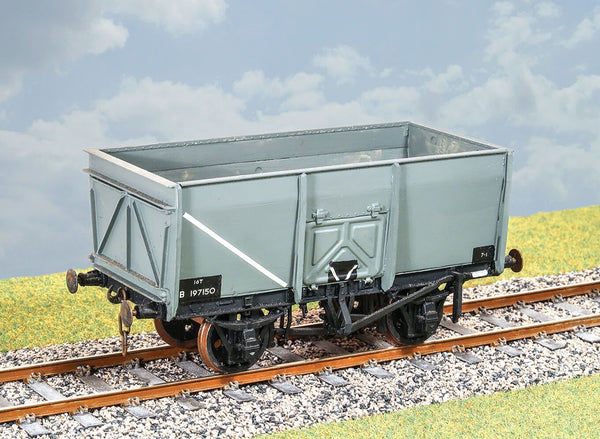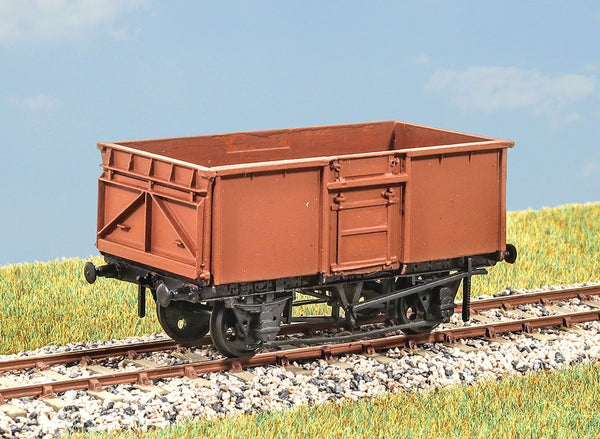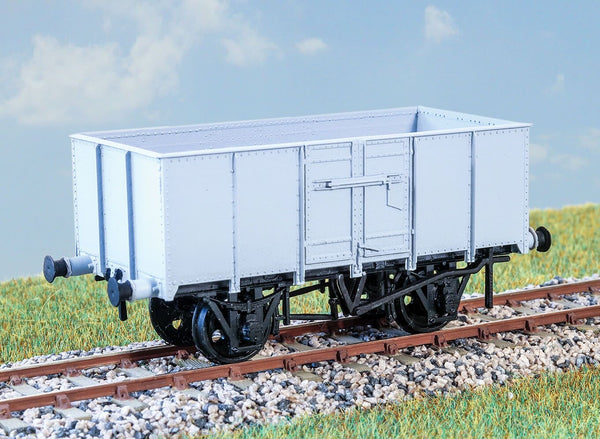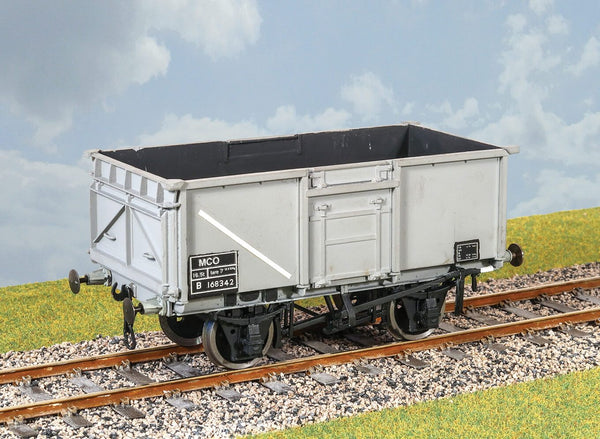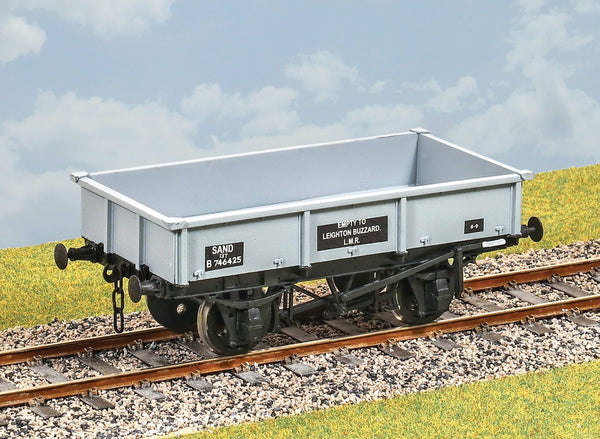BROWSE PECO PRODUCTS
Browse through our complete product portfolio.
261 Products Found
GWR Beetle Prize Cattle Wagon
Introduced to carry valuable cattle with their attendants, they were mainly seen on passenger trains until the 1950s. These finely moulded plastic wagon kits come complete with pin point axle wheels and bearings. Glue and paint will be required, along with appropriate transfers. Additional parts to enable the vehicle to be modelled incorporating modifications made to the prototypes during their working life are included where appropriate.
LNER Horse Box Wagon
30 of these horse boxes (diagram 5) were built by the LNER in 1938, mainly to carry racehorses to meetings throughout Britain. Many lasted into the early 1960s. These finely moulded plastic wagon kits come complete with pin point axle wheels and bearings. Glue and paint will be required, along with appropriate transfers. Additional parts to enable the vehicle to be modelled incorporating modifications made to the prototypes during their working life are included where appropriate.
SR CCT Parcels Van
50 of these vans were built in 1938, with examples lasting into the 1980s and used to carry parcels, mail, luggage and motor vehicles. They were equally at home on branch line or main line trains. These finely moulded plastic wagon kits come complete with pin point axle wheels and bearings. Glue and paint will be required, along with appropriate transfers. Additional parts to enable the vehicle to be modelled incorporating modifications made to the prototypes during their working life are included where appropriate.
BR 16ton Min Wagon Riveted Body
Over 21,000 of these wagons (diagram 109) were built in the 1950s. This kit caters for either pressed steel end doors or the more common fabricated type. These finely moulded plastic wagon kits come complete with pin point axle wheels and bearings. Glue and paint will be required, along with appropriate transfers. Additional parts to enable the vehicle to be modelled incorporating modifications made to the prototypes during their working life are included where appropriate.
RCH 1923 Design 8 Plank Coal Wagon
8-plank 12 ton Coal Wagon RCH Design 1923 Many thousands of these wagons were built to a standard Railway Clearing House design between the wars, for collieries and coal merchants. Latterly in BR stock, they lasted into the early 1960s. These finely moulded plastic wagon kits come complete with pin point axle wheels and bearings. Glue and paint will be required, along with appropriate transfers. Additional parts to enable the vehicle to be modelled incorporating modifications made to the prototypes during their working life are included where appropriate.
Coupling Mounting Blocks for Bachmann (TM) Couplings
Pack of 10 for 36-027 Mk2 Couplings, NEM shaft (cranked) with pocket.
LNER 20ton Goods Brake Van 'Toad B 34'
These brake vans were built with distinctive wooden lookouts from 1924 to 1930. They remained common into the 1960s, mostly on local goods and coal trains. Transfers for LNER and BR. These finely moulded plastic wagon kits come complete with pin point axle wheels and bearings, 3 link couplings and transfers. This kit is supplied with pre-coloured moulded parts although painting can improve the appearance. Additional parts to enable the vehicle to be modelled incorporating modifications made to the prototypes during their working life are included where appropriate.
GWR Container Wagon with 'B' Cont.
This was the standard GWR container wagon (CONFLAT) from 1933 to 1939. Examples lasted into the 1970s. The container supplied with this kit was of a type used to convey bicycles, and is also available separately (PS74). Wagon and container transfers for GWR and BR. These finely moulded plastic wagon kits come complete with pin point axle wheels and bearings, 3 link couplings and transfers. This kit is supplied with pre-coloured moulded parts although painting can improve the appearance.. Additional parts to enable the vehicle to be modelled incorporating modifications made to the prototypes during their working life are included where appropriate.
GWR 12ton Fruit Van
200 of these vans were built 1937/38 to convey Guernsey tomatoes. They were also used for other fruit and vegetable traffic. The fleet lasted into the 1970s, being used for general merchandise outside of the season. Transfers for GWR and BR. These finely moulded plastic wagon kits come complete with pin point axle wheels and bearings, 3 link couplings and transfers. This kit is supplied with pre-coloured moulded parts although painting can improve the appearance. Additional parts to enable the vehicle to be modelled incorporating modifications made to the prototypes during their working life are included where appropriate.
LNER 20ton Hopper Wagon
13,645 of these hoppers were built, this kit representing one from the first batch of 409 built in 1936. Featuring riveted construction and LNER brake gear, many lasted into the 1970s. Transfers for LNER and BR. These finely moulded plastic wagon kits come complete with pin point axle wheels and bearings, 3 link couplings and transfers. This kit is supplied with pre-coloured moulded parts although painting can improve the appearance. Additional parts to enable the vehicle to be modelled incorporating modifications made to the prototypes during their working life are included where appropriate.
BR 'Clam' 21ton Ballast Wagon
Built 1989-1991 on ex hopper chassis, 400 clam wagons carried mainly waste ballast. These finely moulded plastic wagon kits come complete with pin point axle wheels and bearings. Glue and paint will be required, along with appropriate transfers . Additional parts to enable the vehicle to be modelled incorporating modifications made to the prototypes during their working life are included where appropriate.
16 Ton Mineral Wagon Transfers (Waterslide)
Transfers (Waterslide) GWR/BR from Kits PS30-32)
3 Link Couplings Etched hook Springs
Kit and Scratch builder's accessory. Pack contains 2 pairs of couplings. Three-link chain couplings, with no means of drawing the wagons together, were used to form the peculiarly British "loose coupled" freight train: since such trains were not fitted with an automatic through-train braking system there were no pipes to connect between the vehicles. Control of the train was assisted by the guard's van at the rear of the train, or in certain cases a series of vans spaced along the train, which kept the couplings taut and therefore also helped prevent snapped couplings. Such trains travelled at low speeds and were finally phased out in the 1970s.
3 Link Instanter Couplings, Hooks, Springs
Kit and Scratch builder's accessory. Pack contains sufficient parts for 2 pairs of Couplings. The "Instanter" coupling is a development of the standard 3 link coupling. The middle link of the chain is specially shaped so that when lying flat it provides enough slack to make coupling possible, but when this middle link is rotated 90 degrees the length of the chain is effectively shortened, reducing the amount of slack to provide closer coupling, to allow the use of train brake pipes without the need to wind a screw. It can also be coupled from the side of the wagons using a shunter's pole; much safer than having to go between vehicles when coupling them together.
B' Container Transfers (Pressfix) GWR/BR
Transfers (Pressfix) GWR/BR 'B' Container (from kit PS39)
Banana and Meat Van Transfers (Waterslide)
Transfers (Waterslide) SR/BR (from kits PS100-101)
Black Background Transfers (Waterslide)
Transfers (Waterslide) Black Background Patches (Pack of 5)
Bolster Set
Kit and scratch builders accessory; as included in the 21 ton Twin Bolster wagon kit PC18.
BR (LNER Design) Plywood Goods Van
These wagons (diagram 1/176) were built by the LNER from the end of the Second World War. 3250 were constructed to this diagram. Lasted until the early 1970s. These finely moulded plastic wagon kits come complete with pin point axle wheels and bearings. Glue and paint will be required, along with appropriate transfers. Additional parts to enable the vehicle to be modelled incorporating modifications made to the prototypes during their working life are included where appropriate.
BR 10 foot Chassis kit, LNER Pattern Clasp Brake Shoes
Kit and scratch builders accessory, as supplied with 13 ton Steel Open Goods Wagon kit PC01A.
BR 10 foot Chassis kit, Vacuum Fitted with Clasp Brake Shoes
Kit and scratch builders accessory; as included in the 12 ton 'Vanwide' kit PC41. Includes both LMS (J' Hanger) and BR Type Spring Suspension detail.
BR 10 foot Chassis kit, Vacuum Fitted with Push Brake Shoes
Kit and scratch builders accessory; as included in the Shock Absorbing Open wagon kit PC28.
BR 10 foot Wagon Chassis kit, Vacuum fitted Morton Brake
Kit and scratch builders accessory, as supplied with 13 ton Wooden Open Goods Wagon kit PC02A.
BR 10ton Insulated Meat Van
250 of these vans (diagram 1/251) were built in 1952/53 for carrying chilled meat. In the 1960s many were used as ordinary goods vans before withdrawal in the early 1970s. These finely moulded plastic wagon kits come complete with pin point axle wheels and bearings. Glue and paint will be required, along with appropriate transfers. Additional parts to enable the vehicle to be modelled incorporating modifications made to the prototypes during their working life are included where appropriate.
BR 12 foot Wagon Chassis kit (Unfitted) - Morton Brake
Kit and scratch builders accessory; as included in the 21 ton Loco Coal Wagon kit PC31.
BR 12 ton Pipe Wagon Transfers.
BR 12 ton Pipe Wagon Transfers: 1950s and 1960s/70s periods (from Kit PS17)
BR 12ton Fish Van
410 of these vans (diagram 800) were built in 1954 for express fish traffic. Either oil or roller bearing ‘Blue Spot’ types may be modelled. In later years many became ‘SPV’ parcels vans. These finely moulded plastic wagon kits come complete with pin point axle wheels and bearings. Glue and paint will be required, along with appropriate transfers. Additional parts to enable the vehicle to be modelled incorporating modifications made to the prototypes during their working life are included where appropriate.
BR 12ton Fruit Van
200 of these vans (diagram 1/230) were built in 1949 for fruit, vegetable and flower traffic. Many survived until the mid 1970s. This van can easily be converted to an LMS (D2112) goods van of 1944. These finely moulded plastic wagon kits come complete with pin point axle wheels and bearings. Glue and paint will be required, along with appropriate transfers. Additional parts to enable the vehicle to be modelled incorporating modifications made to the prototypes during their working life are included where appropriate.
BR 12ton Goods Van Plywood Sides
3500 of these vans (diagram 1/213) were built in the mid 1950s for general goods traffic and lasted into the 1980s. Ventilation scoops are included for the fruit van variation.These finely moulded plastic wagon kits come complete with pin point axle wheels and bearings. Glue and paint will be required, along with appropriate transfers. Additional parts to enable the vehicle to be modelled incorporating modifications made to the prototypes during their working life are included where appropriate.
BR 12ton Insulated Fish Van
This is a well-known vehicle, derived from the final LNER Fish van design. BR built 1,000 of them. After fish traffic ended they were converted to Parcels Vans (SPV) and lasted into the 1980s. The kit allows both oil and roller bearing axle box versions to be built. Transfers for BR. These finely moulded plastic wagon kits come complete with pin point axle wheels and bearings, 3 link couplings and transfers. This kit is supplied with pre-coloured moulded parts although painting can improve the appearance. Additional parts to enable the vehicle to be modelled incorporating modifications made to the prototypes during their working life are included where appropriate.
BR 12ton Pallet Van
Construction of these vans (diagram 1/211) started in 1952. Their wide doors were designed for loading by fork lift truck. They were withdrawn in the mid 1960s. These finely moulded plastic wagon kits come complete with pin point axle wheels and bearings. Glue and paint will be required, along with appropriate transfers. Additional parts to enable the vehicle to be modelled incorporating modifications made to the prototypes during their working life are included where appropriate.
BR 12ton Pipe Wagon
These wagons were designed to carry heavy cast iron or steel pipes for water and drainage works. This kit represents one of 350 built in 1955. Withdrawn between late 70s and early 80s. Transfers for early and post-TOPS BR. These finely moulded plastic wagon kits come complete with pin point axle wheels and bearings, 3 link couplings and transfers. This kit is supplied with pre-coloured moulded parts although painting can improve the appearance. Additional parts to enable the vehicle to be modelled incorporating modifications made to the prototypes during their working life are included where appropriate.
BR 12ton Pipe Wagon
Introduced in 1949 to an LMS design, 800 of these wagons (diagram 1/460) carried large diameter pipes for the construction industry. Withdrawn in the early 1980s. These finely moulded plastic wagon kits come complete with pin point axle wheels and bearings. Glue and paint will be required, along with appropriate transfers. Additional parts to enable the vehicle to be modelled incorporating modifications made to the prototypes during their working life are included where appropriate.
BR 12ton Van
In 1962, 1994 of these vans (diagram 1/217) were built. They have extra wide doors to allow fork lift trucks to handle loading. Some were converted to air brake operation. These finely moulded plastic wagon kits come complete with pin point axle wheels and bearings. Glue and paint will be required, along with appropriate transfers. Additional parts to enable the vehicle to be modelled incorporating modifications made to the prototypes during their working life are included where appropriate.
BR 12ton Van Plank Sides
Over 19,000 of these standard vans (diagram 1/208) were built in the 1950s for general goods traffic and lasted into the 1980s. Alternative plywood doors are included. These finely moulded plastic wagon kits come complete with pin point axle wheels and bearings. Glue and paint will be required, along with appropriate transfers . Additional parts to enable the vehicle to be modelled incorporating modifications made to the prototypes during their working life are included where appropriate.
BR 13ton Medium Goods Wagon
(Diagram 1/019) 4000 were built in 1950-55 to carry such loads as farm machinery and containers. In the 60s they had a second lease of life as Civil Engineers’ ballast wagons. Withdrawn in 1970s/80s.
These finely moulded plastic wagon kits come complete with pin point axle wheels and bearings. Glue and paint will be required, along with appropriate transfers. Additional parts to enable the vehicle to be modelled incorporating modifications made to the prototypes during their working life are included where appropriate.
BR 13ton Open Goods Wagon
Over 8000 of these wagons (diagram 1/039, 1/044) were built to an LMS design in the 1950s. Used until the 1980s, some lasted another decade in the Civil Engineer’s fleet. These finely moulded plastic wagon kits come complete with pin point axle wheels and bearings. Glue and paint will be required, along with appropriate transfers. Additional parts to enable the vehicle to be modelled incorporating modifications made to the prototypes during their working life are included where appropriate.
BR 13ton Steel Open Goods Wagon
6500 of these wagons (diagram 1/037, 1/041) were built in the early 1950s, using a post war LNER design. Many survived into the 1980s. These finely moulded plastic wagon kits come complete with pin point axle wheels and bearings. Glue and paint will be required, along with appropriate transfers. Additional parts to enable the vehicle to be modelled incorporating modifications made to the prototypes during their working life are included where appropriate.
BR 16ton Iron Ore Tippler Wagon
500 of these vans (diagram 1/185) were built in the mid 1930s to carry fruit traffic - comprising soft and hard fruit and flowers - to destinations throughout Britain. These finely moulded plastic wagon kits come complete with pin point axle wheels and bearings. Glue and paint will be required, along with appropriate transfers. Additional parts to enable the vehicle to be modelled incorporating modifications made to the prototypes during their working life are included where appropriate.
BR 16ton Mineral Wagon
6,000 were built at the end of the Second World War for service in France. They returned to the UK later in the 1950s and remained in use into the 1960s. Many were then sold into private industry use. Transfers for BR. These finely moulded plastic wagon kits come complete with pin point axle wheels and bearings, 3 link couplings and transfers. This kit is supplied with pre-coloured moulded parts although painting can improve the appearance. Additional parts to enable the vehicle to be modelled incorporating modifications made to the prototypes during their working life are included where appropriate.
BR 16ton Mineral Wagon
16 ton Mineral Wagon, Non Vacuum Fitted (diagram 1/108) Over 206,000 of these all steel, welded body wagons equipped with hand brakes only were built in the 1950s. They lasted in large numbers until the late 1980s. These finely moulded plastic wagon kits come complete with pin point axle wheels and bearings. Glue and paint will be required, along with appropriate transfers. Additional parts to enable the vehicle to be modelled incorporating modifications made to the prototypes during their working life are included where appropriate.
BR 16ton Mineral Wagon
About 8000 were built in 1944-1947, almost 2000 of which worked in France until repatriated in the early 1950s. Most survived until the mid 1960s, as BR diagram 1/100. These finely moulded plastic wagon kits come complete with pin point axle wheels and bearings. Glue and paint will be required, along with appropriate transfers. Additional parts to enable the vehicle to be modelled incorporating modifications made to the prototypes during their working life are included where appropriate.
BR 16ton Mineral Wagon
The sloped sided design evolved from pre-1939 private owner wagons built by Chas. Roberts and Co. After the liberation of France 2,500 were shipped over there, 1,900 later returning. Around 10,000 were in stock with BR, with withdrawal taking place in the 1960s. Some ended up private industry use. Transfers for BR. These finely moulded plastic wagon kits come complete with pin point axle wheels and bearings, 3 link couplings and transfers. This kit is supplied with pre-coloured moulded parts although painting can improve the appearance. Additional parts to enable the vehicle to be modelled incorporating modifications made to the prototypes during their working life are included where appropriate.
BR 16ton Mineral Wagon
Vacuum fitted, introduced in 1956, these wagons continued to be used throughout the BR period, carrying coal to coal depots and factories as well as scrap (from 1975), aggregate and engineer’s spoil.
These finely moulded plastic wagon kits come complete with pin point axle wheels and bearings. Glue and paint will be required, along with appropriate transfers. Additional parts to enable the vehicle to be modelled incorporating modifications made to the prototypes during their working life are included where appropriate.
BR 16ton Mineral Wagon
(French type) Introduced in 1946, 7000 of these wagons were supplied to France and returned to BR in 1950-1952, where they lasted until the mid 1960s. These finely moulded plastic wagon kits come complete with pin point axle wheels and bearings. Glue and paint will be required, along with appropriate transfers. Additional parts to enable the vehicle to be modelled incorporating modifications made to the prototypes during their working life are included where appropriate.
BR 16ton Mineral Wagon
The definitive BR standard mineral wagon produced in vast quantities during the 1950s, and used well in to the 1980s, carrying coal, scrap metal and many different minerals. Parts included for Instanter couplings and double brake gear. Transfers for early, late and post-TOPS BR. These finely moulded plastic wagon kits come complete with pin point axle wheels and bearings, 3 link couplings and transfers. This kit is supplied with pre-coloured moulded parts although painting can improve the appearance. Additional parts to enable the vehicle to be modelled incorporating modifications made to the prototypes during their working life are included where appropriate.
BR 18ton Sand Wagon
A fleet of specialist wagons for industrial and building sand were constructed in the early 1950s. They were designed for emptying by tipper or grab. Withdrawal started in the 1970s, some lasting in Civil Engineers service into the 1980s. Transfers for early and post-TOPS BR. These finely moulded plastic wagon kits come complete with pin point axle wheels and bearings, 3 link couplings and transfers. This kit is supplied with pre-coloured moulded parts although painting can improve the appearance. Additional parts to enable the vehicle to be modelled incorporating modifications made to the prototypes during their working life are included where appropriate.




